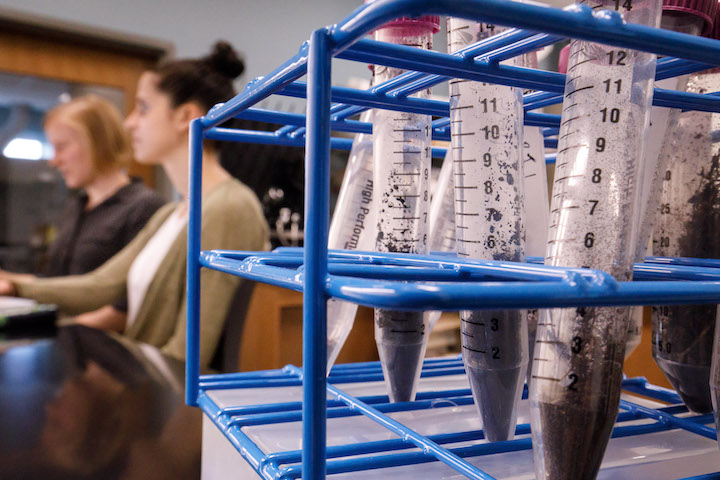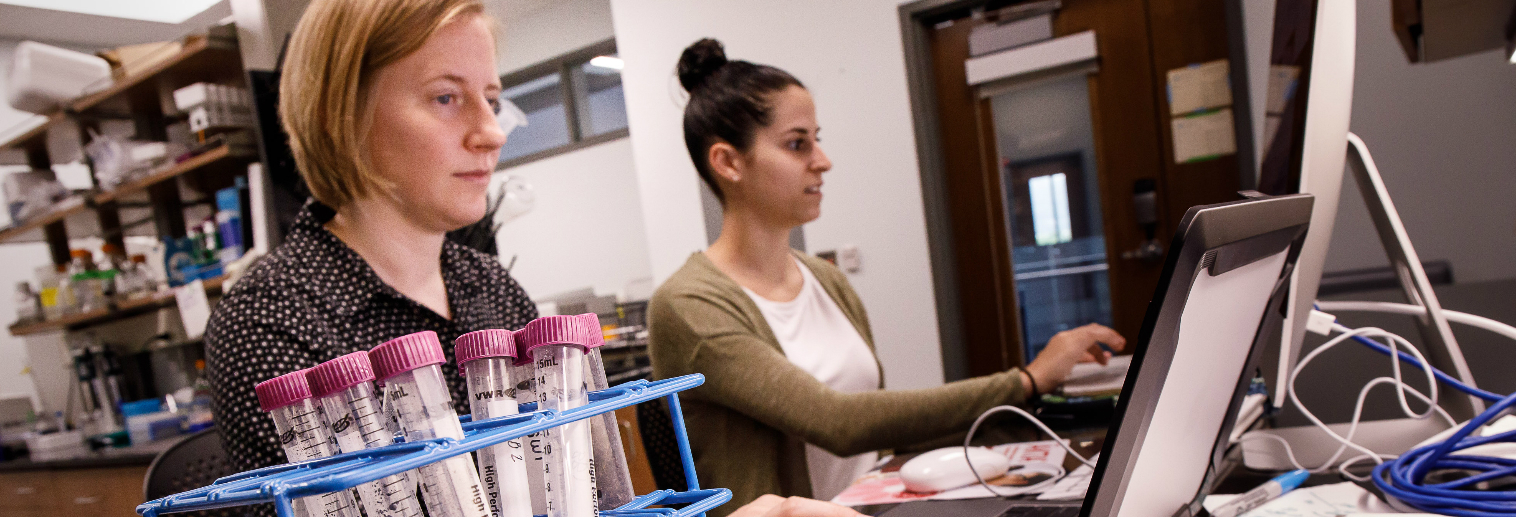Alayna Koch ’19
“Microbiome Analysis of Soil from Palmerton Zinc Pile Superfund Site”
Major: Interdepartmental major in biology and management
Hometown: Alburtis, PA
Project Advisor: Dr. Kara Mosovsky
Describe your project.
The Palmerton Zinc Pile Superfund Site is an area of approximately 3,000 acres of heavy-metal contaminated mountainside, denuded of plant life due to nearly 100 years of emissions from zinc smelting plants. Different research test plots have been established on the Superfund Site in an attempt to restore native grasses to the barren, contaminated land. This project aims to determine if soil bacterial community differences exist between various test plots at the Superfund Site. Following soil sample collection, bacterial DNA was isolated, purified, and sequenced. A computer science software, Quantitative Insights into Microbial Ecology (QIIME2), bioinformatics pipeline was developed and used to conduct the data analysis. This pipeline was used to map phylogeny, classify taxonomy, and then measure diversity and relative abundance.
How did your project come about?
In the fall 2017 semester I spoke with Dr. Mosovsky regarding possible independent study research opportunities for the spring 2018 semester. She brought the idea of “microbiome analysis” to my attention and explained that it was an area of research in which she was hoping to get started. After performing a trial microbiome analysis of two soil samples from Moravian’s campus in the spring 2018 semester, we were both eager to continue this area of research through the SOAR program.
What’s the best part about working with your faculty mentor? What valuable insights has she brought to your project?
Working with Dr. Mosovsky has been a remarkable experience and I am extremely grateful that she took me on as her SOAR student this summer. She is a very approachable, understanding, and kind-hearted faculty mentor. This was an area outside both our expertise and it was a time-intensive learning process. Throughout my project, Dr. Mosovsky served as a positive role model and motivated me to excel in this program. She brought several valuable insights to the project, specifically regarding the mastery of the microbiology aspects and the QIIME2 computer science software.

What was your biggest obstacle?
It has been a time intensive process to master the microbiology and computer science aspects of this research. At first glance, the computer science aspect appeared to be the biggest challenge to overcome for this project. To put this into perspective, Dr. Mosovsky and I often comparing learning QIIME2 to learning a new language. However, with dedication and hard work we were able to successfully conduct the microbiome analysis using it.
What has been your biggest takeaway from this experience?
The project has enhanced my critical reasoning, problem-solving, and analytical skills. The quality and accuracy of my research further strengthened my organizational skills and attention to detail, as well as my ability to achieve the high standards I set for myself. This research experience and learning opportunity has fostered a tremendous personal reward for me.
What was the result of your project?
Overall, we were surprised by the similarity of bacteria present among all of the soil samples across the six sites. We had expected much more variation to be seen between the sampling sites. How do we explain these findings? First, we must note that our analysis does not necessarily distinguish between live and dead bacteria. We propose two hypotheses for why there is so much consistency between samples. First, treatment effects (limestone, burns, fertilizer, compost, etc.) on soil bacteria may no longer be visible after an extended period of time. There might have been an effect due to these treatments, but that effect may be short-lived in terms of alterations to the bacterial communities in the soil. Second, rainfall and erosion down the hillside may have caused bacteria to move from one site to another leading to a blending effect of bacterial communities. There is so little topsoil to begin with that any rain would likely contribute to bacterial migration down the hill.
Overall, how do you feel about being awarded this opportunity? Why should other students take advantage of the SOAR program at Moravian University?
I believe that acceptance into the SOAR program is a significant accomplishment and has been one of my most meaningful experiences. I feel very fortunate to have been afforded this opportunity. I would encourage other students to take advantage of the SOAR program at Moravian. It allows students to build a rapport and make connections with other researchers and faculty mentors, as well as strengthen and develop technical skills. In my opinion, students also gain a personal reward by completing their research and overcoming challenges along the way.
Do you plan to expand upon your research?
Microbiome studies are a booming field in research. I have taken great interest in microbiome analysis and will continue this research in an honors program during my senior year. It is also an area of research I foresee continuing to pursue after completion of my undergraduate studies.
Any plans to present this research outside the SOAR presentations?
In addition to presenting my research for the SOAR program and campus community, I also had the opportunity to present at the Regional Microbiology Educators 14th Annual Student Research Symposium at St. Joseph’s University and the Landmark Summer Research Symposium at Juniata College. In the future, I am considering applying to present at the National Conference for Undergraduate Research (NCUR) and the Annual Meeting of the Pennsylvania Academy of Sciences, and possibly American Society for Microbiology (ASM) Microbe.

